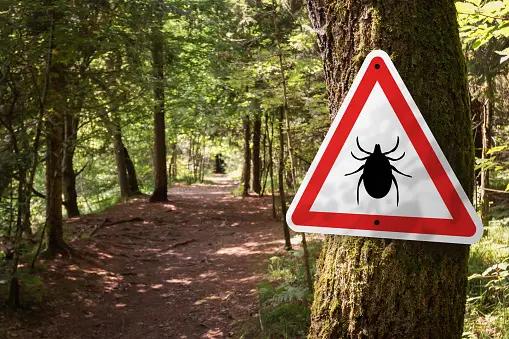Lyme disease stands as the most common vector-borne illness in the US, with 90% of cases originating from 15 jurisdictions characterized by high incidence rates across the Northeast, Mid-Atlantic, and Upper Midwest. The notable increase in Lyme disease cases reported in 2022 reflects changes in surveillance methodologies rather than an increase in the disease risk. A revised surveillance case definition has improved the uniformity of case reporting among jurisdictions. However, it also presents challenges in conducting comparisons with past data due to differences in methodologies.
With the implementation of the new surveillance case definition in 2022, there was a marked rise of 62,551 Lyme disease cases reported to the Centers for Disease Control and Prevention (CDC). This represents a 1.7-fold increase over the annual average of 37,118 cases noted during 2017–2019. The data reveal a significant surge in Lyme disease incidence among the older population, particularly in adults aged 65 years and older, where incidence rates have approximately doubled in comparison to the 2017–2019 timeframe.
“The number of reported Lyme disease cases in the United States increased 68.5% over the average reported during 2017–2019; in high-incidence jurisdictions, the number of cases increased 72.9%, whereas in low-incidence jurisdictions, the number of cases increased 10.0%,” according to the CDC. “The differential increase in incidence might reflect:
- more frequent laboratory testing among older age groups.
- proportionally more disseminated illness in older age groups
- proportionally more positive laboratory test results related to previous exposure to Borrelia burgdorferi rather than a current illness.”1
3 Key Takeaways
- The introduction of a new surveillance case definition in 2022 led to a substantial 68.5% increase in Lyme disease reports compared to the 2017-2019 average.
- Data from 2022 reveals a significant increase in Lyme disease incidence among individuals aged 65 years and older, with rates approximately doubling from the previous years.
- The current Lyme disease surveillance system likely underestimates the true incidence due to its reliance on clinical symptoms and variable clinician reporting.
The 2022 revision of the surveillance case definition permits high-incidence jurisdictions to report cases of Lyme disease based purely on laboratory evidence, without the need for corroborating clinical information. This adjustment seeks to foster greater consistency in surveillance practices across different jurisdictions.
According to the CDC, “date of illness onset is rarely available in high-incidence jurisdictions given the reliance on laboratory-based reporting without case investigation to ascertain clinical information. Alternative dates related to laboratory testing or reporting still demonstrate summer seasonality, but are shifted 2 weeks later, reflecting the expected time lag required after symptom onset to mount a detectable immune response to B. burgdorferi.”1
This report highlights two significant limitations in Lyme disease surveillance. First, the current surveillance likely misses many cases, especially early-stage ones without sufficient laboratory evidence, due to reliance on clinical symptoms like the erythema migrans rash and the variability in clinician reporting. Overreporting can also occur from serologic tests detecting past infections, leading to the inclusion of cases not currently affected by Lyme disease. Second, the adoption of the more sensitive Modified Two-Tier Test (MTTT) serologic assays for Lyme disease in 2019 has the potential to increase detected cases but has been hindered by systemic challenges in test recognition, possibly underrepresenting true incidence rates in 2022.
The adoption of standardized codes by both commercial and clinical laboratories is essential for the accurate identification of individuals who have laboratory evidence of Lyme disease for surveillance objectives. Despite the increase in the number of reported cases compared to past years, the figures still fall short of the approximately 476,000 annual Lyme disease diagnoses projected in the United States, underscoring the urgent need for effective prevention strategies.
Prevention Strategies include being mindful of going outside of ticks in grassy or wooded areas. Protect yourself by treating gear with 0.5% permethrin and using EPA-approved insect repellents like DEET. Check for ticks on clothing and gear after being outdoors, use a dryer on high heat to kill ticks, and wash clothes in hot water. Shower and do a full body check for ticks within two hours of coming indoors to lower disease risk.2
References
- Centers for Disease Control and Prevention (CDC). Surveillance for lyme disease after implementation of a revised case definition-united states, 2022. Published on February 15, 2024. Accessed February 16, 2024. https://www.cdc.gov/mmwr/volumes/73/wr/mm7306a1.htm?s_cid=mm7306a1_w
- CDC. Preventing tick bites on people. Published September 30, 2019. Accessed February 16, 2024. https://www.cdc.gov/lyme/prev/on_people.html


















